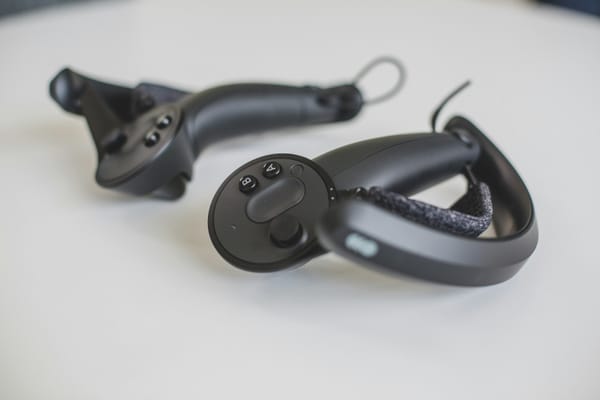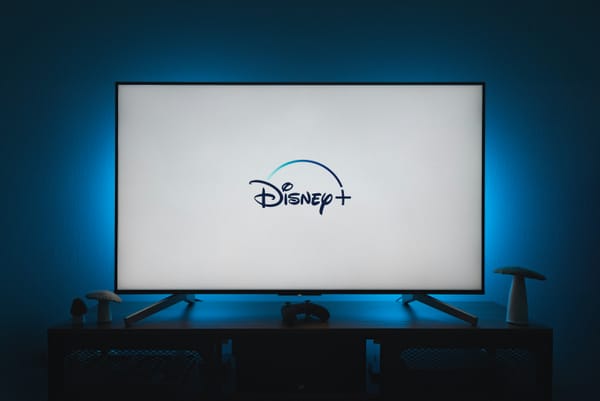22 Tips for A Virtual Reality Presentation
Looking to wow your audience with a virtual reality presentation? Check these 22 tips to create an immersive experience like never before!
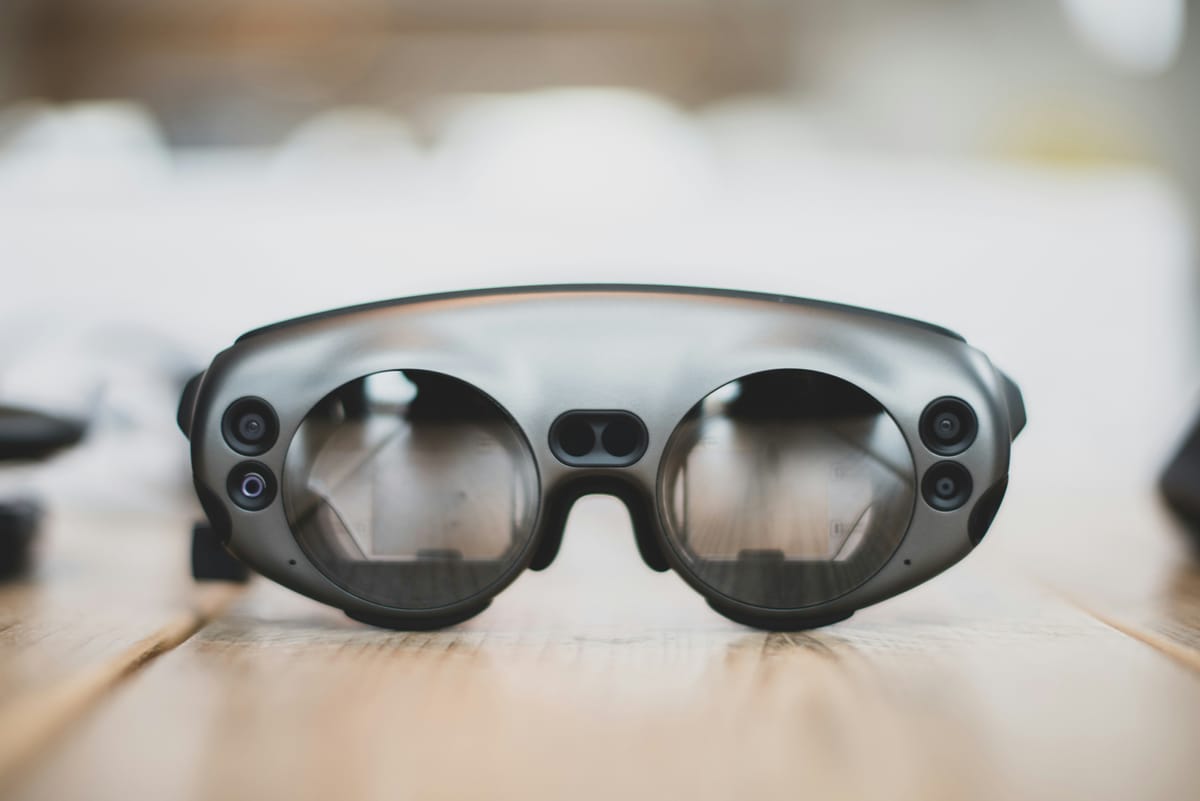
Immerse yourself in the future of presentations with virtual reality presentation. Step into a dynamic virtual workspace where you can captivate your audience like never before. Explore the endless possibilities of engaging visual content, interactive elements, and a truly immersive experience. Elevate your presentations to a whole new level and leave a lasting impression on your audience. Dive into the world of virtual reality presentation and revolutionize the way you communicate your ideas.
Table of Contents
- What is Virtual Reality?
- Using VR for Business Presentations
- 11 Virtual Reality Applications
- 22 Tips for A Virtual Reality Presentation
- The Advantages of VR Presentations Over Traditional Presentations
- Factors to Consider When Using Virtual Reality for Presentations
- Get The Apple Vision Pro Experience for A Fraction of The Cost With Fluid
What is Virtual Reality?
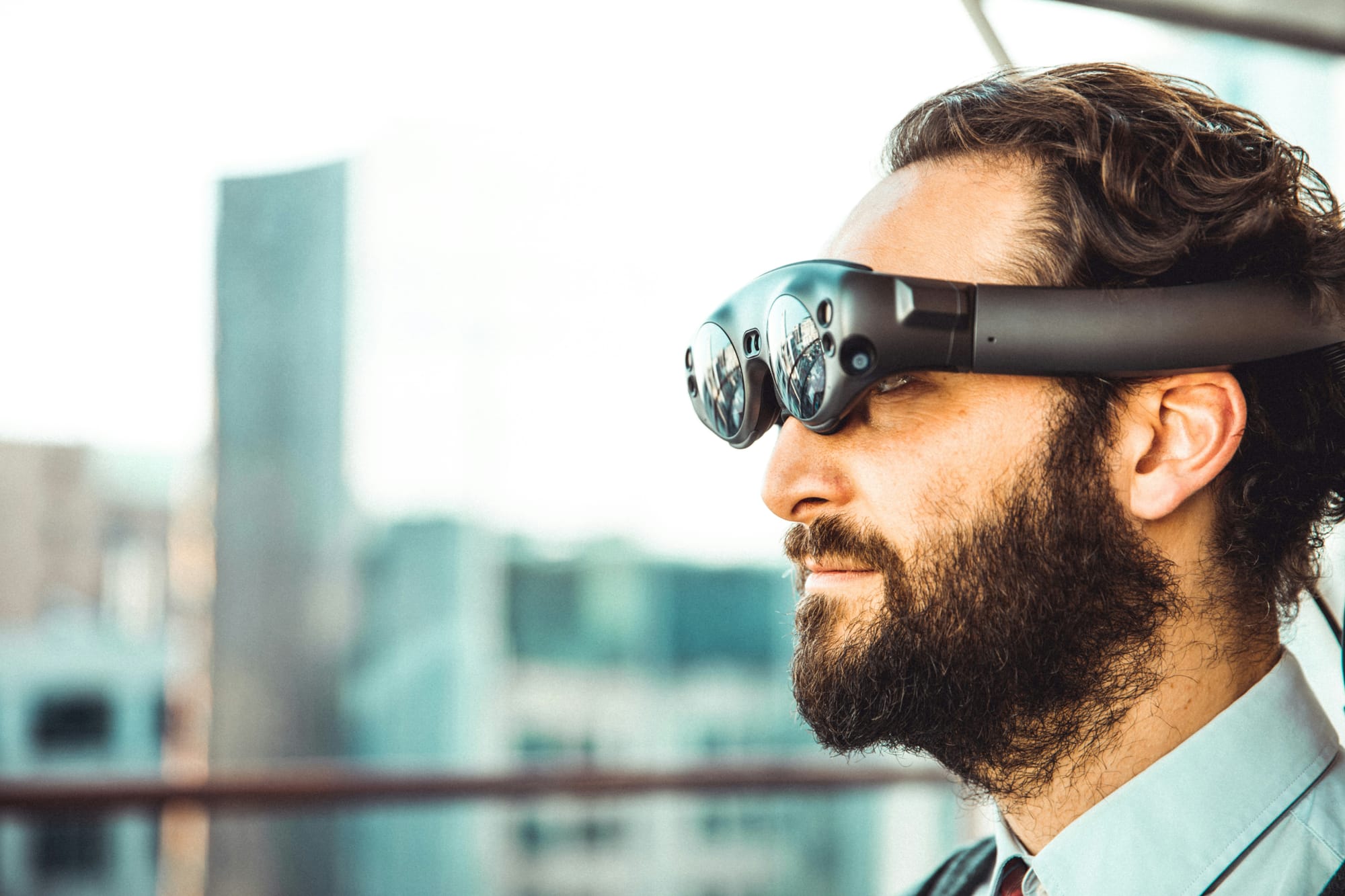
Virtual Reality (VR) is a cutting-edge technology that simulates a digital environment to provide immersive, three-dimensional experiences to users. This technology aims to blur the line between the physical and digital worlds, creating lifelike scenarios for users to interact with. VR environments are computer-generated, leveraging advanced graphics and algorithms to construct realistic settings and objects, enhancing the sense of presence and immersion for users.
The Evolution of VR and Its Current Significance
The evolution of VR has been remarkable, with early iterations focusing on research and military applications, gradually expanding into entertainment, gaming, education, and even healthcare. Over the years, advancements in hardware and software have significantly improved the quality and accessibility of VR experiences. Today, VR plays a crucial role in various industries, offering innovative solutions for training, marketing, design, and more. Its significance lies in its ability to revolutionize how we learn, communicate, and experience the world around us.
The Basic Components of VR Systems
VR systems consist of several key components that work together to create immersive experiences for users. Central to these systems are headsets or helmets, which users wear to enter the virtual environment. These headsets are equipped with motion sensors, tracking the user's movements to adjust the virtual environment accordingly. In addition to headsets, VR systems may include hand controllers, motion-tracking devices, and even voice commands for enhanced interaction within the virtual world. These components work in tandem to create a seamless and immersive VR experience for users.
Flexible Workspace with Fluid in XR
Fluid allows you to create a flexible workspace in XR on the Meta Quest. With Fluid, you can place big screens anywhere in augmented reality. Fluid enables flexible workspaces and entertainment, cloud gaming, and much more. The most game changing feature of all: Fluid allows you to create a virtual workstation with VR/AR using the Meta Quest, with virtually any screen size. You can create your own $5,000+ work setup in VR/AR, and take it wherever you’d like to.
Fluid solves remote working and remote work collaboration, long distance relationships, remote teams, small startups with distributed cofounders, gamers that want a portable VR/AR gaming set, students, and much more. Turn your VR headset into a spatial computer for free today with Fluid. Break free from physical screens, watch content on a big screen from anywhere, get into a deep flow state by being immersed in your work, and create a flexible workspace anywhere with Fluid.
Related Reading
- Vr Workplace
- Augmented Reality In The Workplace
- Vr Work From Home
- Vr Training
- Vr Design
- Vr Programs
- Vr In Business
- Vr Marketing
- Vr Conferencing
- Vr Meetings
- Virtual Reality Business Applications
Using VR for Business Presentations
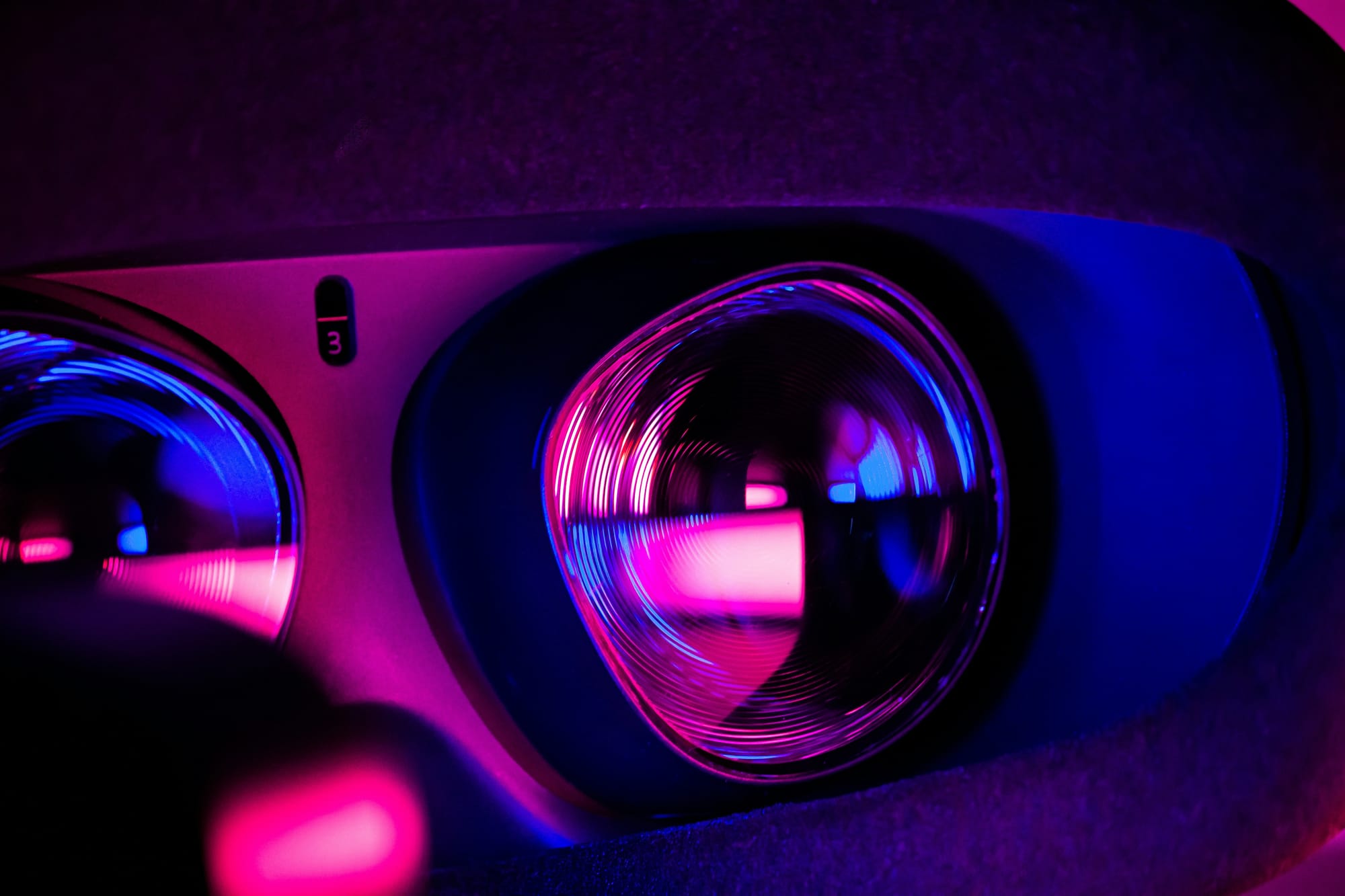
Virtual Reality (VR) technology has evolved beyond the gaming industry, and businesses are leveraging its immersive capabilities to enhance their presentations. By moving beyond traditional slide decks, companies can engage their audience in a whole new way, making the information more memorable and impactful.
Enhancing Engagement and Immersion
VR presentations offer a level of engagement and immersion that traditional methods simply can't match. Users can interact with the content in a 3D space, allowing for a more intuitive understanding of complex concepts and data. This interactivity keeps audiences engaged throughout the presentation, leading to better retention of information.
Creating Memorable Experiences
One of the key advantages of VR presentations is the ability to create memorable experiences for the audience. By transporting viewers to virtual environments, businesses can make a lasting impression and stand out from the competition. Whether showcasing products, giving virtual tours, or simulating real-world scenarios, VR presentations leave a lasting impact on viewers.
Increasing Accessibility and Affordability
As VR technology becomes more accessible and affordable, businesses of all sizes can take advantage of its benefits. From small startups to large corporations, companies can now incorporate VR into their presentations without breaking the bank. This democratization of VR opens up new opportunities for businesses to innovate and connect with their audience in unique ways.
Transform Your VR Headset with Fluid
Experience the future of remote work and collaboration with Fluid. Turn your VR headset into a spatial computer for free today with Fluid. Break free from physical screens, watch content on a big screen from anywhere, get into a deep flow state by being immersed in your work, and create a flexible workspace anywhere with Fluid.
11 Virtual Reality Applications
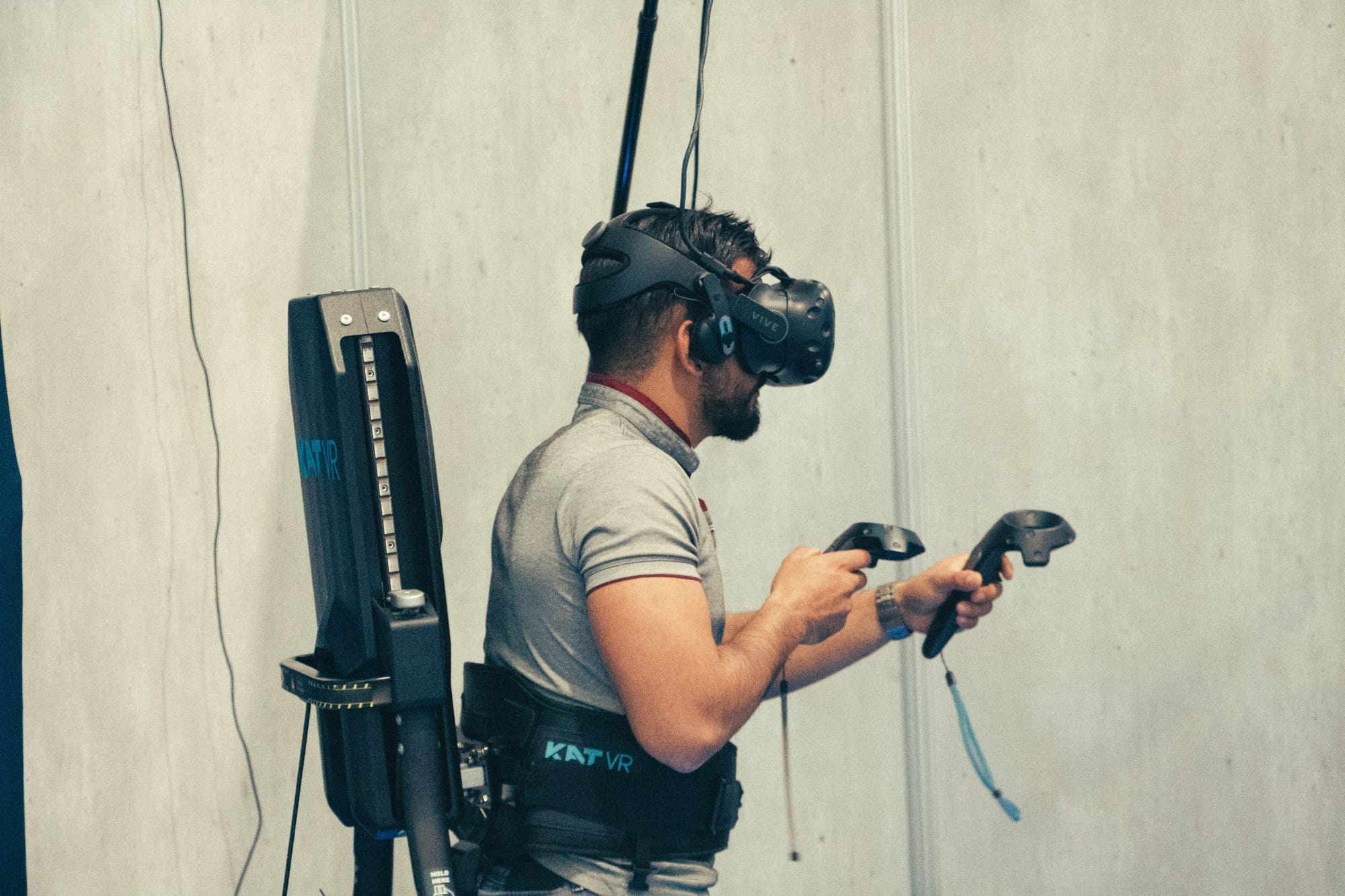
1. Healthcare: Immersive Training and Therapy
In healthcare, virtual reality offers immersive training experiences for medical professionals, allowing them to practice precise operations in a stress-free environment. VR is also used in cognitive behavioral therapy to help patients safely confront and overcome phobias and anxieties.
2. Entertainment: Gaming and Cinematic Experiences
Entertainment industries, such as gaming, cinemas, and theme parks, have been early adopters of virtual reality. VR provides users with immersive experiences, enhancing engagement through virtual adventures and simulations of cinematic experiences.
3. Automotive: Simulation for Prototype Development
Virtual reality assists automotive companies in analyzing road scenarios and car behaviors through simulation, aiding in prototype development. It also facilitates the testing of smart cars with AI, improving safety and functionality.
4. Education: Immersive Learning and Professional Training
In education, VR introduces immersive tools and games that transform learning experiences for students of all ages. It also offers professional training and virtual field trips, expanding educational boundaries beyond traditional classrooms.
5. Space & Military: Realistic Training Environments
For space exploration and military operations, virtual reality provides realistic training environments that minimize actual danger. VR assists in psychological preparation and recovery, particularly for soldiers experiencing battlefield trauma.
6. Architecture: Visualization of Designs in Virtual Environments
Architects use virtual reality to visualize and interact with their designs in true-to-scale environments. This technology enables real-time modifications and a better understanding of spatial dynamics before physical construction begins.
7. Digital Marketing: Engaging Product Demonstrations
In the realm of digital marketing, VR is utilized to create engaging and interactive product demonstrations, enhancing the consumer experience. It allows for innovative strategies like virtual product placements and empathetic messaging.
8. Occupational Safety: Hazard Simulation for Workplace Training
VR improves workplace safety training by simulating potential hazards in a risk-free setting. Employees can learn and practice response strategies to emergencies without actual risks, enhancing overall safety protocols.
9. Social Science and Psychology: Therapeutic Interventions and Research
In social science and psychology, virtual reality supports therapeutic interventions by enabling patients to experience and understand different perspectives. It is also used for studying social interactions and psychological conditions through controlled virtual environments.
10. Tourism: Virtual Destination Tours
For the tourism industry, virtual reality offers virtual tours of destinations, hotels, and landmarks, helping consumers make informed travel decisions. It enhances the pre-travel experience, allowing tourists to preview destinations before booking.
11. Retail and E-Commerce: Virtual Try-Ons and Product Visualization
Virtual reality transforms the retail experience by enabling virtual try-ons and product visualization. Customers can explore products in 3D, aiding in decision-making and reducing return rates.
Fluid's XR Experience on Meta Quest
Fluid allows you to create a flexible workspace in XR on the Meta Quest. With Fluid, you can place big screens anywhere in augmented reality. Fluid enables flexible workspaces and entertainment, cloud gaming, and much more. The most game changing feature of all: Fluid allows you to create a virtual workstation with VR/AR using the Meta Quest, with virtually any screen size. You can create your own $5,000+ work setup in VR/AR, and take it wherever you’d like to.
Fluid solves remote working and remote work collaboration, long distance relationships, remote teams, small startups with distributed cofounders, gamers that want a portable VR/AR gaming set, students, and much more. Turn your VR headset into a spatial computer for free today with Fluid. Break free from physical screens, watch content on a big screen from anywhere, get into a deep flow state by being immersed in your work, and create a flexible workspace anywhere with Fluid.
22 Tips for A Virtual Reality Presentation

1. Know Your Audience
Understand who will be experiencing your VR presentation to tailor the content appropriately.
2. Practice Makes Perfect
Familiarize yourself with the VR environment and rehearse your presentation to ensure a smooth delivery.
3. Engage with Interaction
Utilize interactive elements within your VR presentation to captivate your audience and enhance engagement.
4. Optimize for VR
Design visuals and content specifically for virtual reality to take full advantage of the immersive experience.
5. Keep it Concise
Avoid information overload by keeping your VR presentation focused and to the point.
6. Use Clear Visuals
Visual aids are crucial in VR presentations, so ensure they are clear, impactful, and easy to understand.
7. Incorporate Audio
Leverage audio cues and background sounds to enhance the overall immersive experience of your VR presentation.
8. Ensure Smooth Navigation
Make sure that users can easily navigate through the VR environment without any hiccups.
9. Provide Clear Instructions
Guide your audience on how to interact with the VR presentation to avoid confusion or technical issues.
10. Consider Comfort
Take into account factors like motion sickness and eye strain to create a comfortable experience for users.
11. Test Across Devices
Ensure compatibility with different VR devices to reach a wider audience and prevent technical difficulties.
12. Include Breaks
Allow for breaks during longer VR presentations to prevent fatigue and maintain audience engagement.
13. Encourage Feedback
Gather feedback from users to improve future iterations of your VR presentations.
14. Personalize the Experience
Tailor the VR presentation to each user, if possible, to create a more personalized and engaging experience.
15. Highlight Key Points
Emphasize important information within the VR environment to ensure key takeaways are not missed.
16. Be Adaptable
Stay flexible during the presentation in case of unexpected technical issues or audience needs.
17. Practice Q&A Sessions
Prepare for potential questions from the audience to address them confidently during the VR presentation.
18. Utilize Gestures
Incorporate hand gestures or other interactive features to enhance communication and engagement.
19. Promote Collaboration
Encourage audience participation and collaboration within the VR environment for a more interactive experience.
20. Consider Accessibility
Ensure that your VR presentation is accessible to all users, including those with disabilities.
21. Follow-Up
Provide additional resources or ways for users to revisit the VR presentation after the initial experience.
22. Stay Current
Keep up with the latest trends and technologies in virtual reality to continuously improve your presentations.
Turn Your VR Headset into a Spatial Computer with Fluid
Fluid allows you to create a flexible workspace in XR on the Meta Quest. With Fluid, you can place big screens anywhere in augmented reality. Fluid enables flexible workspaces and entertainment, cloud gaming, and much more. The most game-changing feature of all: Fluid allows you to create a virtual workstation with VR/AR using the Meta Quest, with virtually any screen size. You can create your own $5,000+ work setup in VR/AR, and take it wherever you’d like to.
Fluid solves remote working and remote work collaboration, long-distance relationships, remote teams, small startups with distributed cofounders, gamers that want a portable VR/AR gaming set, students, and much more. Turn your VR headset into a spatial computer for free today with Fluid. Break free from physical screens, watch content on a big screen from anywhere, get into a deep flow state by being immersed in your work, and create a flexible workspace anywhere with Fluid.
Related Reading
- Virtual Reality In Healthcare
- Virtual Reality In The Classroom
- Virtual Reality In Architecture
- Virtual Reality Therapy
- Teams Vr
- Working In Vr
- Vr Collaboration
- Vr Educational Apps
- Vr Data Visualization
- Vr Prototyping
- Enterprise Virtual Reality
- Immersed Vs Virtual Desktop
- Vr Productivity Apps
- Virtual Reality For Training Employees
- Virtual Reality Business Applications
- Benefits Of Virtual Reality In Business
The Advantages of VR Presentations Over Traditional Presentations

Immersive Experience of VR Presentations
Virtual reality (VR) presentations offer a unique and immersive experience that traditional methods simply can't match. With VR, engagement, retention, and interactivity reach new heights. By allowing users to enter a virtual environment that reacts to their actions, VR presentations create a memorable and impactful experience.
This heightened level of engagement is particularly effective for product demonstrations, where viewers can explore features in a three-dimensional space, fostering a deeper understanding and appreciation. Compared to conventional PowerPoint presentations, the immersive nature of VR presentations ensures that the audience remains captivated throughout the session, leading to increased retention of information.
Versatility and Accessibility of VR Presentations
VR presentations are not limited to a single format but can be utilized for various purposes, including virtual tours, product demos, and internal communication. This versatility allows for a wide range of applications, making VR an adaptable tool for different presentation needs. VR content can be accessed on a variety of devices, expanding its reach and accessibility to a broader audience.
Affordable and scalable solutions like the Quest 2 headset by Meta further enhance accessibility, offering a cost-effective option for large-scale deployment. This accessibility ensures that VR presentations can be integrated seamlessly into various business contexts, enhancing communication and engagement.
Challenges and Solutions in Adopting VR for Presentations
While the benefits of VR presentations are undeniable, challenges may arise when adopting this technology. Issues such as technical requirements, content creation, and user training can present obstacles for organizations looking to implement VR presentations. These challenges can be overcome through proper planning, training programs, and collaboration with experienced VR developers.
By investing in user-friendly platforms and providing adequate support, organizations can successfully integrate VR presentations into their communication strategies. Overcoming these challenges is crucial to fully harnessing the potential of VR for enhancing engagement and communication in presentations.
Growth of the VR Market
The VR market is experiencing rapid expansion, with statistics indicating significant growth in the coming years. Projections suggest that the VR market is set to exceed $22 billion by 2025, reflecting a growing acceptance and investment in VR technologies. This growth is driven by advancements in VR hardware, software, and content, as well as increasing awareness of the benefits of VR across various industries.
As VR continues to evolve and become more accessible, its potential for transforming presentations and communication in the business landscape is becoming increasingly apparent.
Transforming Your VR Workspace on Meta Quest
Fluid allows you to create a flexible workspace in XR on the Meta Quest. With Fluid, you can place big screens anywhere in augmented reality. Fluid enables flexible workspaces and entertainment, cloud gaming, and much more. The most game-changing feature of all: Fluid allows you to create a virtual workstation with VR/AR using the Meta Quest, with virtually any screen size. You can create your own $5,000+ work setup in VR/AR and take it wherever you’d like to.
Fluid solves remote working and remote work collaboration, long-distance relationships, remote teams, small startups with distributed co-founders, gamers who want a portable VR/AR gaming set, students, and much more. Turn your VR headset into a spatial computer for free today with Fluid. Break free from physical screens, watch content on a big screen from anywhere, get into a deep flow state by being immersed in your work, and create a flexible workspace anywhere with Fluid.
Factors to Consider When Using Virtual Reality for Presentations

When delving into the realm of Virtual Reality presentations, it is crucial to establish clear objectives to guide the entire experience. Whether the goal is to captivate potential customers, engage meeting attendees, or educate on specific topics, defining the purpose ensures a focused and effective presentation. By setting clear goals, you can tailor the VR content to align with these objectives, creating a seamless and impactful experience for your audience.
Immersive Content Creation: Crafting Meaningful VR Content and Imagery
Choosing the right content and imagery is paramount in delivering a successful VR presentation. It is essential to select visuals that not only complement your message but also resonate with your audience. Be mindful of using images and VR content that accurately represent your brand without any misleading elements. By curating content that aligns with your goals and message, you can ensure a cohesive and engaging VR experience for your viewers.
Enhancing Engagement: The Power of Interactivity in VR Presentations
To elevate audience engagement in VR presentations, incorporating interactive elements is key. Features such as clickable links, hotspots, quizzes, and activities can keep viewers actively involved and focused throughout the experience. By adding interactive components, you can create a dynamic and immersive presentation that encourages participation and enhances retention of key information.
Optimizing Presentation Length: Striking a Balance between Impact and Comfort
When creating VR presentations, it is crucial to strike a balance between impact and comfort by keeping the experience short and impactful. Aim for memorable presentations that last no more than a few minutes to prevent discomfort and maintain audience interest. By delivering concise and impactful content, you can ensure that viewers remain engaged and attentive throughout the VR experience.
Harnessing Technological Innovation: Leveraging Tools for Immersive VR Presentations
Incorporating cutting-edge tools like Fluid for creating immersive VR workspaces in XR on platforms like Meta Quest can revolutionize your presentation delivery. By leveraging these technological advancements, you can enhance remote work capabilities, foster collaboration, and create more immersive presentation experiences. Utilizing innovative tools allows you to push the boundaries of traditional presentations and deliver truly engaging and interactive content.
Audience-Centric Approach: Tailoring VR Experiences for Maximum Accessibility and Comfort
In designing VR presentations, it is essential to consider your audience's needs and preferences to ensure maximum accessibility and comfort. Be mindful of potential discomfort with VR headsets and adjust the length and intensity of the VR session accordingly. By prioritizing audience comfort and broad accessibility, you can create inclusive and engaging VR experiences that resonate with a diverse range of viewers.
Get The Apple Vision Pro Experience for A Fraction of The Cost With Fluid
Fluid, a groundbreaking tool, revolutionizes the virtual reality workspace on the Meta Quest. This innovative technology offers a flexible and dynamic environment where users can create customized workspaces in XR. With Fluid, users can position large screens anywhere in augmented reality, opening up a myriad of possibilities for work, entertainment, cloud gaming, and beyond.
Creating Flexible Workspaces with Fluid on Meta Quest
One of the most game-changing features of Fluid is its ability to enable users to craft virtual workstations in VR/AR, effortlessly adjusting screen sizes to suit individual preferences. This flexibility empowers users to replicate high-end work setups worth thousands of dollars in a virtual space, accessible from any location.
Whether optimizing remote work, enhancing collaboration in distributed teams, fostering long-distance relationships, supporting startups with geographically dispersed founders, or catering to gamers seeking portable VR/AR gaming solutions, Fluid offers a transformative solution.
Enhancing Remote Work Experience with Fluid
Fluid transcends traditional constraints by liberating users from physical screens, allowing them to immerse themselves in their work on virtual displays of any size. This immersive experience not only facilitates deep focus and concentration but also promotes a seamless transition between tasks, enhancing productivity and creativity. By leveraging Fluid, users can break free from the limitations of conventional workspaces and create adaptable environments that cater to their specific needs.
Seamless Integration of Fluid for Diverse Applications
The versatility of Fluid extends beyond professional settings, catering to a diverse range of users, including students seeking immersive learning experiences. By transforming a VR headset into a spatial computer, Fluid offers a gateway to a new realm of possibilities, enabling users to access content on expansive virtual screens from anywhere. Whether seeking to boost productivity, engage in immersive entertainment, or collaborate effectively in a virtual environment, Fluid paves the way for a seamless integration of VR/AR technology into various facets of life.
Embrace the Future of Virtual Reality Presentation with Fluid
As the boundaries between physical and virtual spaces blur, Fluid emerges as a pioneering solution that empowers users to transcend limitations and embrace a new era of virtual reality presentation. By harnessing the capabilities of Fluid on Meta Quest, users can unlock limitless potential, fuel creativity, and redefine the way they work, learn, and connect in the digital landscape.
Join the Fluid revolution today and embark on a transformative journey towards a more immersive and flexible future in virtual reality presentation.
